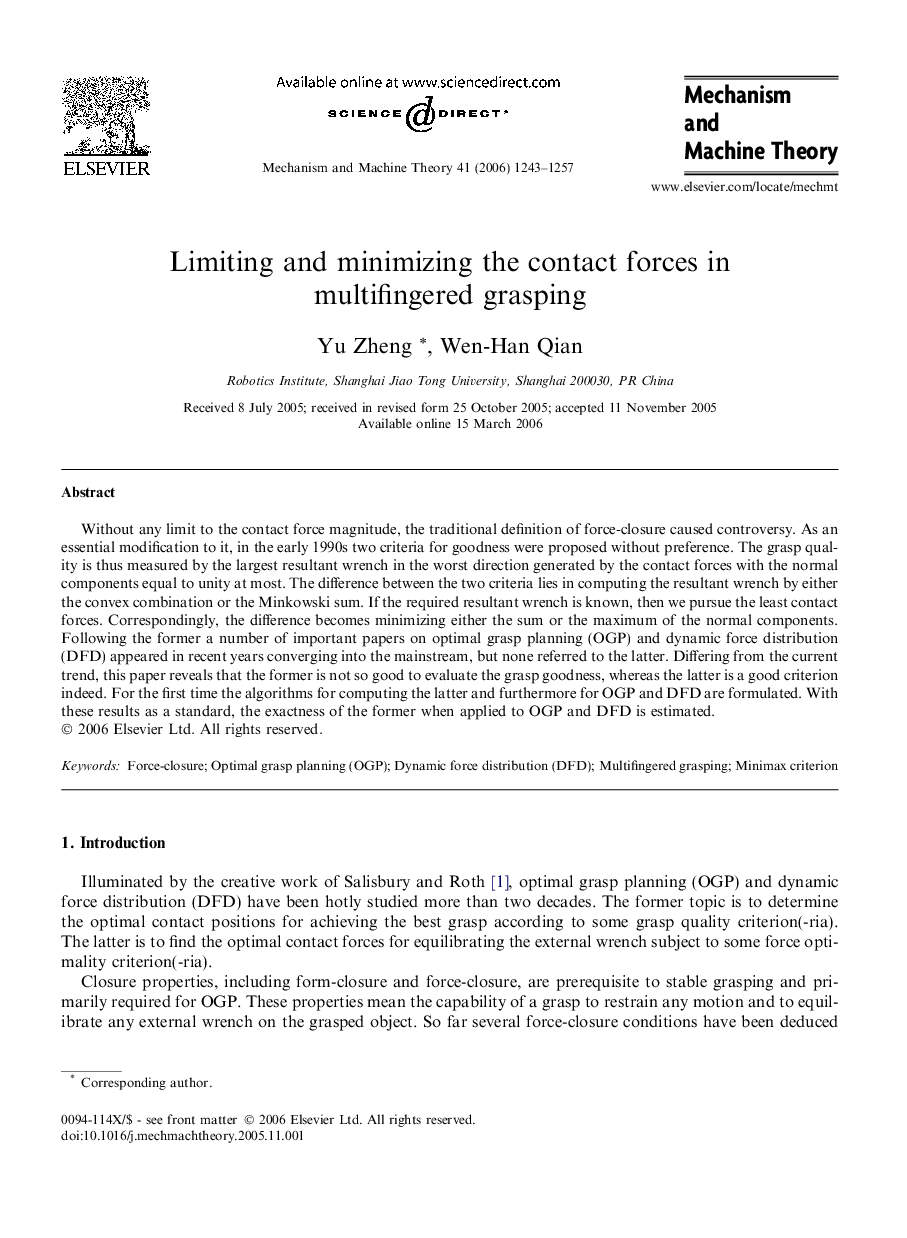| Article ID | Journal | Published Year | Pages | File Type |
|---|---|---|---|---|
| 803578 | Mechanism and Machine Theory | 2006 | 15 Pages |
Without any limit to the contact force magnitude, the traditional definition of force-closure caused controversy. As an essential modification to it, in the early 1990s two criteria for goodness were proposed without preference. The grasp quality is thus measured by the largest resultant wrench in the worst direction generated by the contact forces with the normal components equal to unity at most. The difference between the two criteria lies in computing the resultant wrench by either the convex combination or the Minkowski sum. If the required resultant wrench is known, then we pursue the least contact forces. Correspondingly, the difference becomes minimizing either the sum or the maximum of the normal components. Following the former a number of important papers on optimal grasp planning (OGP) and dynamic force distribution (DFD) appeared in recent years converging into the mainstream, but none referred to the latter. Differing from the current trend, this paper reveals that the former is not so good to evaluate the grasp goodness, whereas the latter is a good criterion indeed. For the first time the algorithms for computing the latter and furthermore for OGP and DFD are formulated. With these results as a standard, the exactness of the former when applied to OGP and DFD is estimated.
